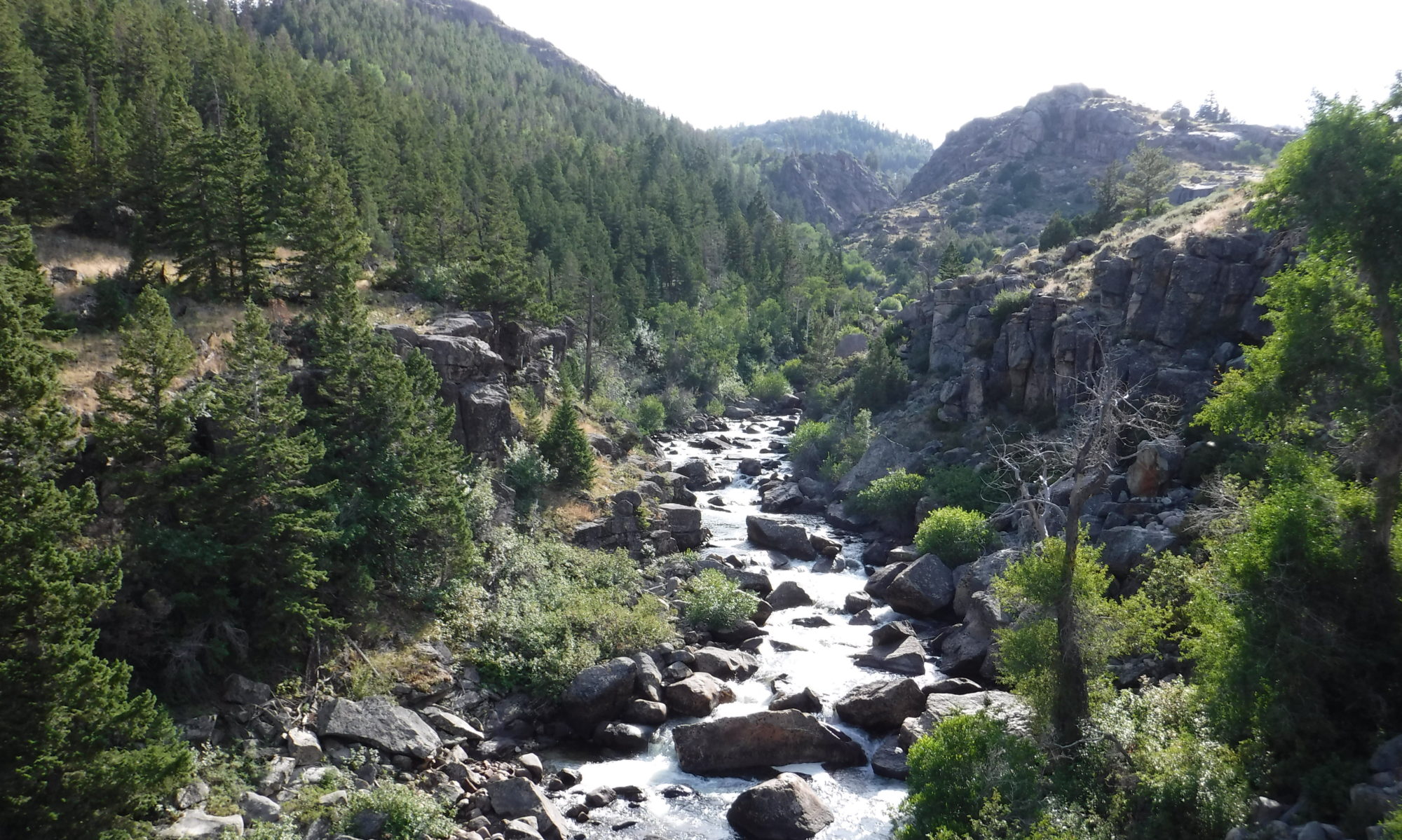New numerical modeling work by Yuqiang Li and coauthors enables reconstruction of erosion and sediment dynamics over large scales in rapidly evolving landscapes. 10.1016/j.epsl.2025.119305. [PDF]
New paper: Beyond boundaries in bedrock rivers
Check out new work by former WVU MS student Nick Colaianne looking at how the depositional environment of in-channel bedrock ultimately affects erodibility and the shape of bedrock rivers. Paper here!
Paper on suspended-sediment response to wildfire and post-fire floods
A team led by USFS scientist Dr. Sandra Ryan monitored fluvial suspended-sediment concentrations for three years after a severe wildfire in northern Colorado. One year after the fire, our study area experienced a ~100-year flood. In this paper we explore how watersheds respond to fire-flood sequences, which has important implications for the sustainability of the water supply in the American West. Find it here.
The lasting legacy of megaflood boulders in mountain rivers
Fresh new science from Dr. Susannah Morey and friends in Geophysical Research Letters. Find it here.
The uncertain future of mountaintop-removal-mined landscapes
Check out two new invited papers in Geomorphology with WVU grad student Sam Bower and friends on how mountaintop removal coal mining influences subsequent landscape evolution:
Part 1: 10.1016/j.geomorph.2023.108984
Part 2: 10.1016/j.geomorph.2023.108985
Changes
On 7/14/2023 I left West Virginia University to join the U.S. Forest Service Rocky Mountain Research Station as a Research Geomorphologist. Given my new job, I will not be routinely taking on new graduate students except through collaborations with university PIs. I remain happy to collaborate with anyone to whom I might be of help.
How impervious are solar arrays?
My new opinion piece in Earth Surface Processes and Landforms uses a recent public policy dust-up over stormwater regulations for solar installations in Virginia to examine the broader question of how we should weigh up the environmental benefits and geomorphic impacts of energy transition infrastructure. Find it here.
The art of landslides
Check out Benjamin Campforts’s recent JGR paper on how landslides govern river and landscape evolution here.
Big, big piles of sediment…
…sit at Earth’s passive continental margins. How can we use forward models of landscape and seascape evolution to read that stratigraphic record and infer something about past landscapes? In this new paper we use beautiful stratigraphic data from the southern Atlantic Ocean to find the optimal form of models for the development of passive margin stratigraphy over geologic time. Spoiler alert: margin evolution is dominated by nonlocal sediment transport events like marine landslides, turbidity currents, and marine debris flows.
WVU ESD students win a bunch of stuff in 2021-2022
Grad and undergrad group members are winning awards left and right!
- Undergraduate researcher Olga Hawranick took home second runner up in the WVU Undergraduate Research Symposium for her poster titled Patterns of channel sinuosity in the Appalachian Valley and Ridge. We will miss Olga next year as she begins her MS in Mathematics at Boise State University!
- Grad student Nick Colaianne was awarded a NASA WV Space Grant graduate fellowship as well as a WVU Geology graduate research grant.
- Undergrad student Corey Crowder was awarded a NASA WV Space Grant undergraduate scholarship.
- Grad student Sam Bower is off to Golden, CO for a summer 2022 USGS Pathways internship. He also got a GSA student research grant.
